

Agridisk
Egypt - Alexandria

Precision Farming | Definition & Technology
Description: As the world grapples with challenges such as escalating food demand, resource scarcity, and environmental pressures, the agricultural sector finds itself in a critical position. It must strike a fine equilibrium between ensuring high productivity and conforming to sustainability norms. Emerging in this scenario as a revolutionary approach is Precision Farming – a synergy of sophisticated technology and savvy farming techniques, designed to optimize crop performance while prioritizing ecological integrity. Getting down to the brass tacks, Precision Farming capitalizes on advanced digital and mechanical technologies, undertaking granular level management of crops, to realize efficiency, boost yield, and minimize environmental impact. This transforms the traditional, less efficient and more labor-intensive farming into a profitable and sustainable business. Precision farming—also known as precision agriculture—is a modern farming technique that makes use of technology to optimize the use of resources on a farm, thus improving productivity, efficiency, and sustainability. From GPS-based applications to IoT (Internet-of-Things) tools, precision farming involves the use of advanced technologies to observe, measure, and respond to variabilities within a farm. Instead of viewing a field as one homogeneous unit, precision farming recognizes it as a diverse ecosystem with different needs across its landscape. The significance of precision farming in the context of modern agriculture becomes evident when considering the global demographic trends and rising pressure on food systems. As the world’s population continues to grow exponentially, so does the demand for food. Precision farming aims to rise to this challenge, enhancing food production while minimizing environmental impact. It enables a more efficient use of water and fertilizer, decreases greenhouse gas emissions, and optimizes the overall productivity of agricultural activities. Therefore, the application of precision farming contributes significantly to sustainable agriculture—a crucial element in feeding a growing global population in a resource-limited world. It brings us a step closer to achieving a tenable balance between human nutritional requirements and environmental preservation. Implementing precision farming necessitates the integration of a fleet of state-of-the-art technologies and systems. One of these compelling advancements is the Global Positioning System (GPS) which plays a crucial role in plot mapping and machinery guidance. Through sophisticated geospatial technologies, farmers are able to accurately identify and track specific portions of their field for targeted crop management. Field data collection for the purpose of better understanding environmental variations within the farm becomes more feasible. GPS, by providing spatially specific information, helps to minimize the overuse or misuse of resources such as fertilizers and pesticides. Robotic systems and automation have also proven indispensable in precision farming. Equipped with sophisticated sensors, these robotic entities detect and respond to varying field conditions, enabling the precise application of inputs. For instance, autonomous tractors can be programmed to apply pesticides and fertilizers optimally, improving efficiency while significantly reducing environmental effect. Moreover, automated drones with hyperspectral, multispectral, or thermal sensors provide farm managers with real-time information on crop health and field condition, thereby aiding rapid, informed decisions. Lastly, the integration of Big Data and the Internet of Things (IoT) in precision farming cannot be underscored enough. Smart farming relies heavily on data collection, analysis, and utilization for informed decision-making. Sensor technologies collect a tremendous amount of data on weather patterns, soil conditions, crop health, and more, which is then processed using advanced analytics. This amalgamation of data and its subsequent analysis offers an unprecedented level of decision-making support, facilitating the most optimal strategies for resource allocation and farm management. Consequently, the synergy of these advanced technologies optimizes productivity, boosts sustainability, and propels modern agriculture towards the goal of feeding an escalating global population without compromising the health of our planet. Precision farming offers immense prospective benefits, including the potential for significantly increased profitability. These higher net returns can be realized by reducing input costs and boosting yields due to more efficient and targeted input application. Furthermore, more precise pest and disease management can reduce crop damage, leading to increased productivity and financial returns. On an environmental front, precision farming practices could mitigate some negative environmental impacts of agriculture by reducing runoff and minimizing the use of agricultural chemicals. However, precision farming is not without potential drawbacks. One significant barrier for many producers is the high capital investment required for the needed technology and machinery. These costs might not be feasible for small scale farmers or those in developing regions. Furthermore, precision farming places a high demand on data management, necessitating a level of digital literacy that may not be commonplace, particularly in rural and developing areas. Similarly, there could be concerns over data privacy, with farmers wary of giving away information about their operations. Additionally, while precision farming can reduce some environmental impacts, it does not eliminate them entirely. For instance, although it can minimize the use of agricultural chemicals, these reductions may not be enough to substantially ease the environmental burden of intense farming practices. Finally, the adoption of high-tech precision farming could potentially increase the technological divide between developed and developing countries. It is vital that the universal accessibility to these advancements and their benefits are considered in the course of their implementation. Despite these reservations, the possibilities opened up by precision farming for the future of agriculture cannot be disregarded. With careful consideration and appropriate safeguards, it holds enormous potential for advancing sustainable, efficient, and economically viable farming practices. Precision farming has displayed profound resilience, making significant strides in overcoming challenges to become the cornerstone of contemporary agricultural practices. This authenticates the transformative impact that meticulous discernment of data can have on the efficiency of resource consumption. Completing each process from planting to harvesting; precision farming delicately finesses each stage of crop production—combining data from various sources to provide substantial insights. This newfound knowledge holds the capacity to accurately dictate farming decisions and implement necessary modifications, ensuring maximum output. Noteworthy too is the ability of precision farming techniques to attune to shifts in environmental conditions and farming objectives. Indeed, one can foresee its evolution into a futuristic branch known as predictive farming. Leveraging technologies such as artificial intelligence and machine learning, predictive farming aims to anticipate changes in weather, crop health, and other variables, thus enabling preemptive actions rather than mere responses to existing conditions. Driven by the continual advancements in technology and the proliferation of data-driven insights, the agriculture industry is expected to become both more precise in its tactics and intensely productive. The future of agriculture under precision farming promises an era of conservation wherein bountiful harvests are produced with a fraction of the resources currently required. The application of its practices, on a global scale, promises a shift towards more sustainable farming that upholds food security without compromising environmental integrity. Furthermore, the future foresees a scenario where farmers are no longer enslaved by the unpredictability of their profession but rather make informed decisions supported by data, thereby harmonizing agriculture with nature. It is emblematic of an agriculture sector wherein symbiosis between technology, the environment, and the human population is not just a far-fetched ideal, but a realizable vision. As has been illuminated, Precision Farming steers agriculture into the future, amalgamating technology with crop cultivation to create a seamless, efficient, and eco-friendly operation. However, high initial costs, technology complexity, and skilled labor demands remain as significant hurdles. Yet, the case studies presented underscore how Precision Farming’s successful implementation leads to notable benefits. Progressing down this trajectory, the future may reveal even more sophisticated technology amalgamation, including things like artificial intelligence, big data analysis, and advanced robotics. Such developments are likely to fortify Precision Farming's contributions towards high yield farming and sustainable agriculture, consequently paving the way for other industries to follow the technology-enhanced sustainability model. As technology continues to revolutionize our lives, its impact on agriculture manifests powerfully in the form of precision farming technology. This technology, an amalgamation of several components like Global Positioning Systems, Geographic Information Systems, remote sensing, and variable-rate technology, is reshaping farming as we know it. From humble beginnings in the form of simple machinery, the journey of precision farming has seen a transformation to high-profile programming and satellite technology. This evolution has been driven by changing agricultural practices and spearheaded by several pioneers in the field. Essentially, precision farming technology stands at the intersection of traditional agricultural practices and cutting-edge technology, offering improved productivity, profitability, and environmental sustainability. Precision farming, a revolution in agricultural practice, hinges on the intersection of technology and agriculture. This innovative approach to farming has experienced colossal advancements over the years, contributing significantly to enhanced agricultural efficiency and productivity. The initial breakthroughs in precision farming can be traced back to the early 1990s, when GPS-based applications were first introduced to farming. They gave agriculturalists a newfound ability to accurately map out their fields and equipped machines with automatic steering. This technology quickly spread worldwide, introducing a significant increase in the scale of technology's involvement in agriculture. In the mid-1990s, the concept of Variable Rate Technology (VRT) entered the agricultural landscape. This advancement in farming technology allows for the application of the right input, in the right amount, at the right time, and in the right location. VRT is largely propelled by GPS technology and real-time kinematic positioning. These technologies enable farmers to deliver inputs such as fertilizer and pesticides with remarkable precision, reducing waste and environmental impact. As we ushered in the 21st century, the adoption of remote sensing technology became a prominent aspect of precision farming. This technology, consisting largely of satellite or drone-based systems, assesses and responds to intra-field variability in crop health. Remote sensing provides a birds-eye view of the field, allowing for the detection of plant stress, disease, moisture deficiency and nutrient shortage, therefore guiding decision-making. More recently, significant strides with Big Data and Artificial Intelligence (AI) have further enhanced the reach and precision of farming technology. By capturing and utilizing large amounts of data from different sources, and employing complex algorithms to analyze this data, newer tools can provide predictive modeling and help farmers in decision-making. Machine learning algorithms help interpret this data, and deep learning networks increase the accuracy in detecting diseases, pests, and nutrient deficiencies. The incorporation of Internet of Things (IoT) into farming practices is yet another milestone in the evolution of precision farming. IoT devices collect data on ambient conditions and crop health, and relay this information to a centralized system. This automation improves efficiency and minimizes human error. The narrative of precision farming technology's evolution is marked by the continuous interplay of interdisciplinary collaboration, technological breakthroughs, and a steadfast commitment to sustainable, efficient agriculture. The march towards sustainability, while harnessing the power of sophisticated technology, powerfully underscores precision farming's development story. The transformation extends far beyond the tools, as it has redefined our conception of farming and its potential. The journey, far from complete, continues to unfold, promising a future of further breakthroughs that strive towards meeting the escalating global demand for food, ensuring food security, and championing environmental sustainability. Precision farming, otherwise known as precision agriculture, is an approach to farming that leverages digital technology to enhance crop cultivation. A broad understanding of the core components of precision farming technology is thus essential to achieving sustainable agricultural practices. This discourse will encompass Autonomous Guided Vehicles (AGVs), Unmanned Aerial Vehicles (UAVs), Sensor Technology, and Software Solutions. AGVs are among the critical components of precision farming, allowing for the implementation of agricultural activities in a more mechanized manner. Essentially, AGVs are designed to steer farm machinery in a specific, pre-determined manner to apply seed, water, and fertilizers, minimizing wastage and increasing precision. They rely on geographical positioning systems for feedback on the AGV’s current location, thereby optimizing the route while reducing the overlap between passes. Next are the Unmanned Aerial Vehicles (UAVs), or drones, which have progressively gotten prevalent in precision farming. Video-capturing drones can generate nuanced agricultural data regarding growth issues, irrigation inconsistencies, and other critical yield influencers. Infrared imagery, multispectral images, and hyperspectral images aid farmers in identifying potential threats such as pest stress, water stress, and nutrient stress. By detecting these minor issues before they graduate into major problems, UAVs serve as an early warning system, enabling timely interventions. Indeed, among the significant advancements causing ripples in the field of precision farming is Sensor Technology, which aids producers in acquiring a much more detailed knowledge of their fields. Soil sensors, for instance, collect intricate soil data, providing insights into its structure, temperature, moisture content, and other characteristics essential for crop growth. In addition, plant sensors can provide vital knowledge on the plant's health status, helping farmers to adjust their strategies accordingly. Software solutions are the backbone of precision farming. They not only collect and analyze data from various sources, including drones, sensors, and AGVs, but also store this data for future reference. Analytical tools within the software convert raw data into actionable insights that can guide farmers on decisions such as the optimum times to sow, irrigate, or use pesticides. This collaboration of machinery, software, and human interpretation underlies successful precision farming. In conclusion, precision farming's transformative effect on agriculture stems from the complex interplay between AGVs, UAVs, Sensor Technology, and Software Solutions. These core components are instrumental in providing indispensable and timely data that farmers need to implement optimal actions, leading to heightened productivity. However, the ultimate effect depends on farmers’ ability to make sound decisions based on the insights derived from this technology. As such, the continual study and understanding of precision farming technologies are necessary to truly unlock their transformative potential in agriculture. One of the many facets of precision farming that has shown great promise in enhancing crop cultivation is the use of Autonomous Guided Vehicles (AGVs). AGVs are designed to perform a broad spectrum of farming tasks, such as seeding, fertilizing, and harvesting, without the need of human intervention. By automating these processes, AGVs offer several benefits - they can increase the efficiency of farming operations, lessen the dependency on labor, and contribute to the precision farming's goal of executing tasks with accuracy and minimal waste. Another ingenious invention that has revolutionized precision farming is the use of Unmanned Aerial Vehicles (UAVs), commonly known as drones. These flying machines offer a bird’s eye view of the farmland, providing accurate and up-to-date information about the health and growth of the crops. The data gathered by UAVs is crucial for farmers in making informed decisions about irrigation, fertilizing, and crop rotation strategies. As any connoisseur of technology would defend, the hardware – the AGV's and UAV's - is just half of the equation. The software, the brain guiding these technologies, is equally essential. The growth and spread of proprietary and open-source software solutions spearhead the intelligent machinery in precision farming. They make sense of the high volumes of data, translating them into actionable insights for farmers. Sensor technology plays a vital role in the secure, efficient running of precision farming operations. Sensors placed in soil can provide real-time information on moisture levels, temperature, and nutrient levels, which can then be utilized to create customized, data-informed irrigation plans. Additionally, crop sensors can report on light absorption and reflectance capabilities of plants, key indicators of crop health and development. Precision farming is a marvel symbiosis of AGVs, UAVs, sensor technology, and software solutions. They work in concert to transform farm operations – minimizing human error, optimizing resources, increasing crop yield, and importantly, lessening the environmental impact of agriculture, thus pushing the boundaries of productivity and sustainability. Given the relatively nascent stage of this technology, the need for continual study and understanding of precision farming technologies cannot be overstated. Ongoing research is crucial to tap into its full potential to transform agriculture across the breadth of scale – from small, family-owned farms to vast, industrial food production enterprises. Continuous rigorous research, development, and education are needed in this sphere to keep up with the rapidly evolving technology. This pursuit promises to bring to light new understanding, methods, and tools to help ensure that our rapidly growing global population will not only be fed, but nourished sustainably. Indeed, the future of farming is precision. Notwithstanding the aforementioned tributes to precision farming, the recognition of ongoing challenges is crucial for realistic advancement. The broad segmentation of agriculture worldwide presents these hurdles. While precision farming technology thrives in developed nations, adaption in less developed regions is far from seamless. High initial cost associated with precision farming technology is a prominent barrier. Precision farming tools such as drones, sophisticated sensors, and advanced software solutions demand substantial investment from farmers. Smaller farms in particular struggle to shoulder these costs, limiting the technology's reach. Similarly, internet connectivity acts as a bottleneck. Precision farming technologies are highly dependent on the reliable and constant connectivity that is not ascertainable in remote farming areas in developing nations, limiting the widespread deployment of these technologies. Coupled with issues of cybersecurity that often stem from increased connectivity, this challenge goes beyond rural disparities. Further, the complexity of these technologies and the need for foundational knowledge to operate them pioneers an additional obstacle. Education and training, necessary for utilizing these tools effectively, often act as a constraint, especially in regions where literacy rates might be low or where technological literacy is not widespread. Looking to the future, we see promises, hurdles, and boundless potential. Hyperspectral imaging, a technique that uses a wide range of light wavelengths to provide detailed images of a crop's condition, is expected to revolutionize the assessment of crop health and nutrition even further. Development in nanotechnology has the potential to change the game in precision fertilizer and pesticide application, taking VRT to an entirely new level of accuracy. Additionally, the continued evolution of AI and machine learning techniques could facilitate further advancements in data analysis, offering even more precise crop predictions and farming suggestions. However, the success of these future technologies entirely depends on overcoming the current challenges which impede the adoption of precision farming methods. Precision farming, resonating with the ethos of efficient and sustainable agriculture, carries the onus of the food security of the growing global population. The quest for more research, the development of affordable precision farming tools, and educational programs to bridge the knowledge gap is imperative. Therefore, while we envisage a future with precision farming technology, let us not overlook the real challenges that need to be addressed today. Undeniably, addressing these barriers will help us stride towards an agriculture revolution evoked by precision farming. As we peer into the future, the potential of precision farming technology is monumental. Its capacity to recondition and revolutionize agricultural practices in unimaginable ways is fascinating. Nevertheless, alongside its prospects, precision farming also wrestles with challenges like exorbitant implementation costs, skeptical farmer adoption, and data privacy concerns. To untap the massive potential of this technology, it is crucial to address these limitations navigating intelligently through research advancements and policy influences. Undeniably, precision farming technology is the harbinger of a new era in agriculture, heralding a future where technology and farming practices amalgamate, catalyzing productivity and supporting the environment in unison.Precision Farming | Definition & Technology
Precision Farming Definition
Overview of Precision Farming

Technology Behind Precision Farming

Advantages and Challenges of Precision Farming
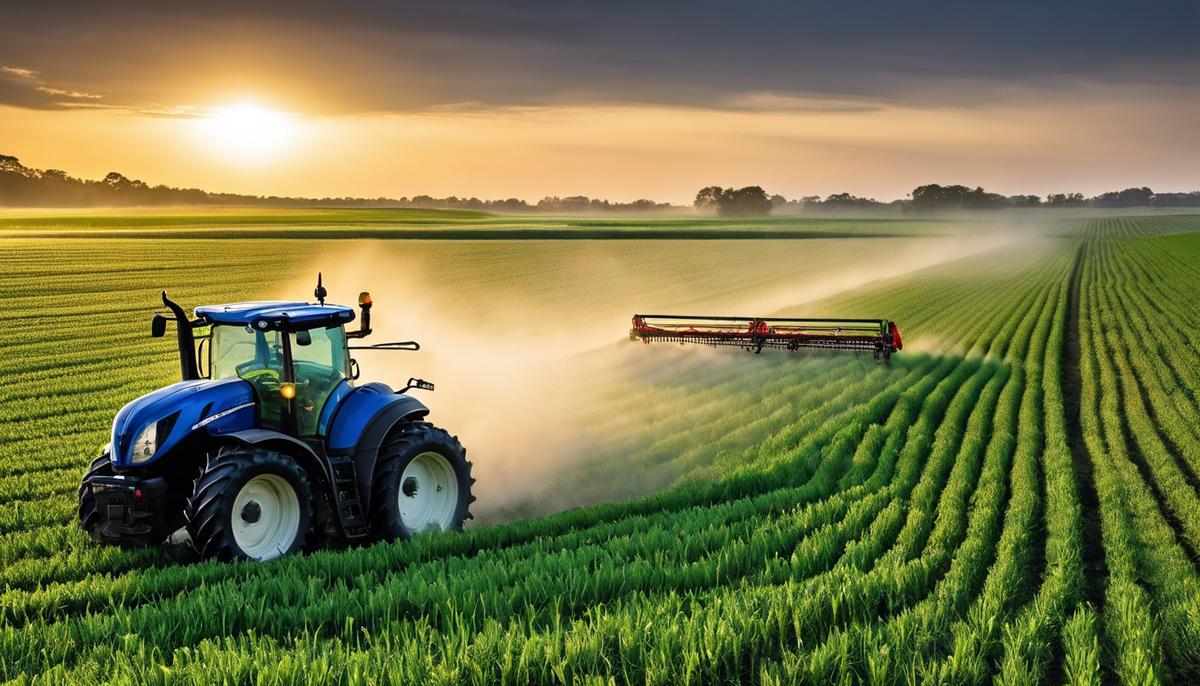
Case Studies and Future of Precision Farming
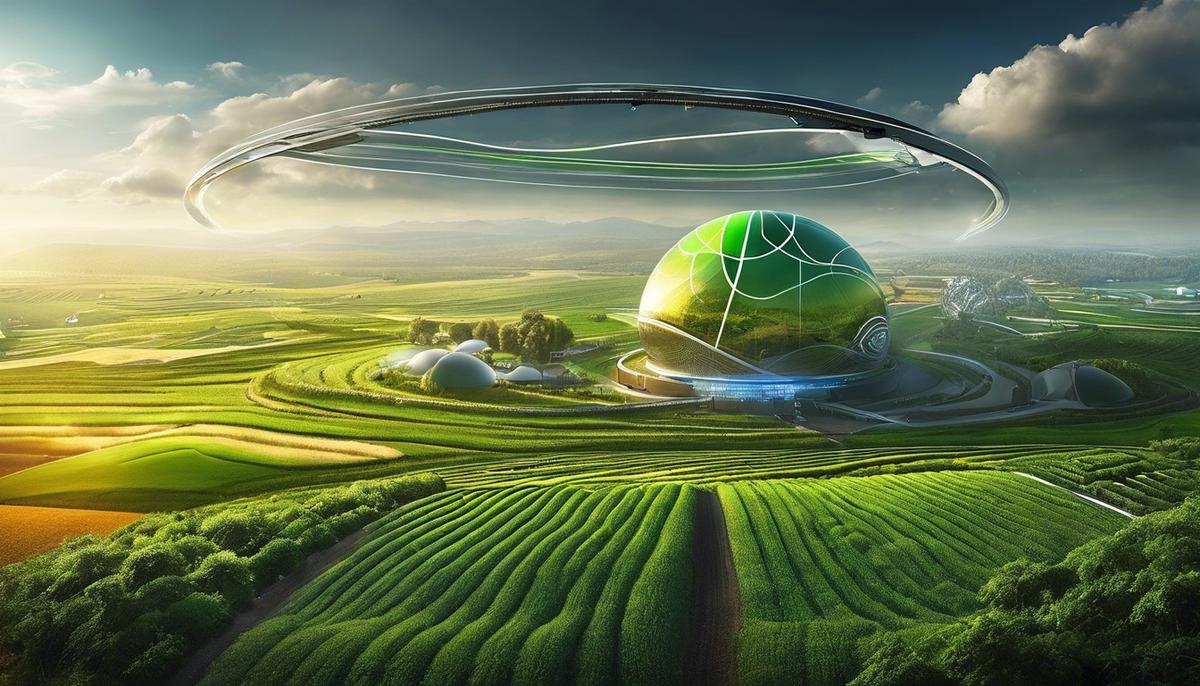

Precision Farming Technology
Evolution and Development of Precision Farming Technology
The Evolution and Development of Precision Farming Technology: An Ongoing Journey
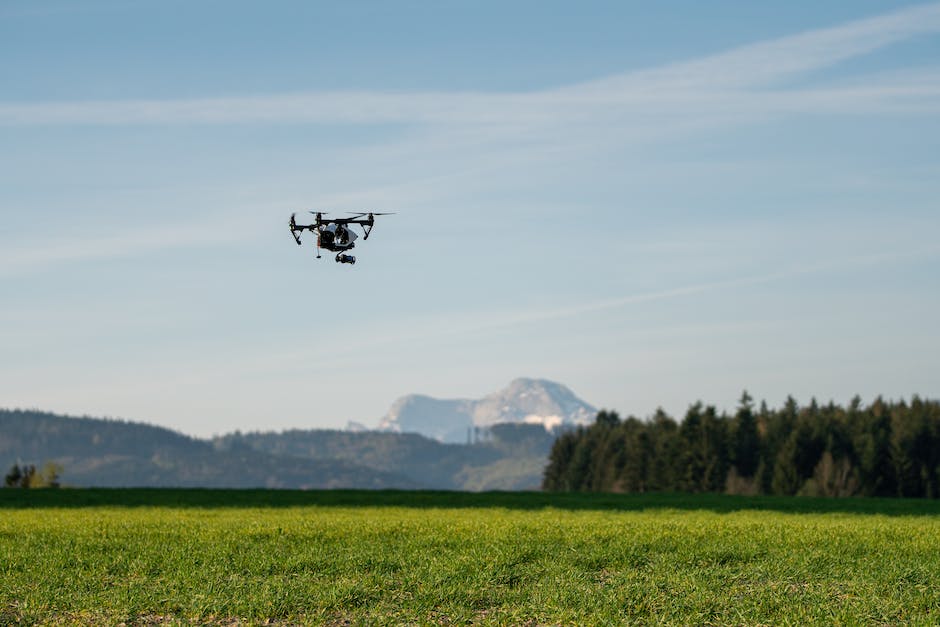
Core Components of Precision Farming Technology
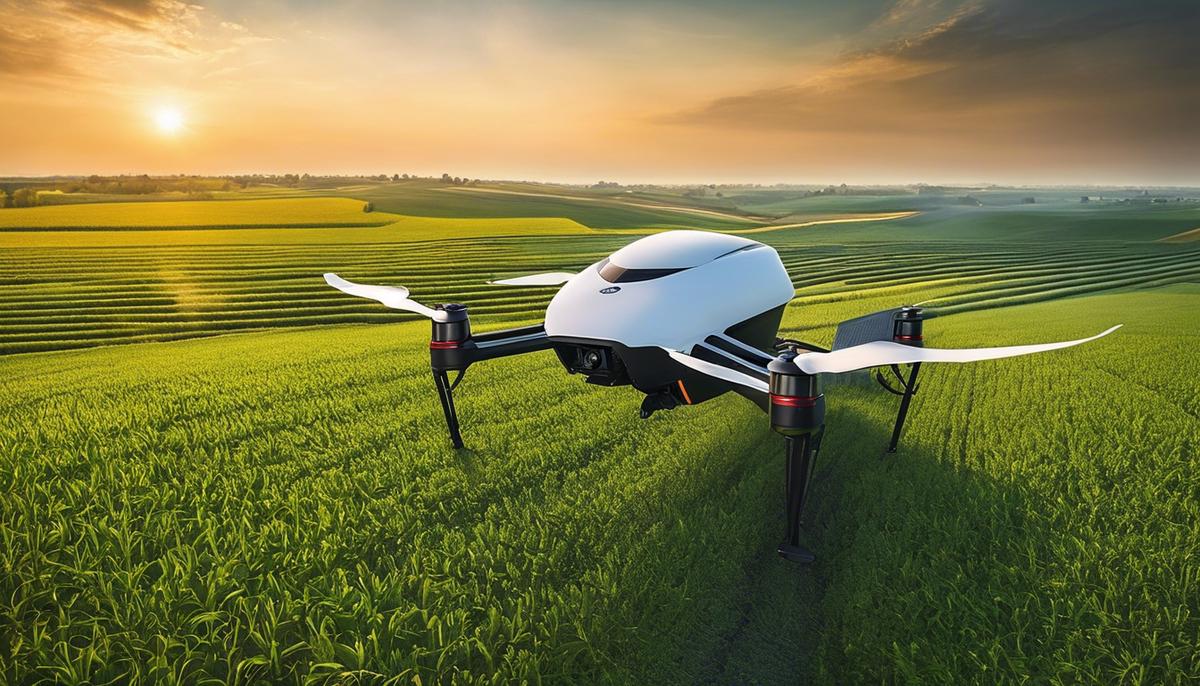
Impact and Applications of Precision Farming Technology
The advent of precision farming technology has ushered in a new era of productivity and sustainability in the domain of agriculture. This unique approach harnesses the power of modern science to condition the agricultural environment to optimize productivity, reduce waste, and promote sustainability.
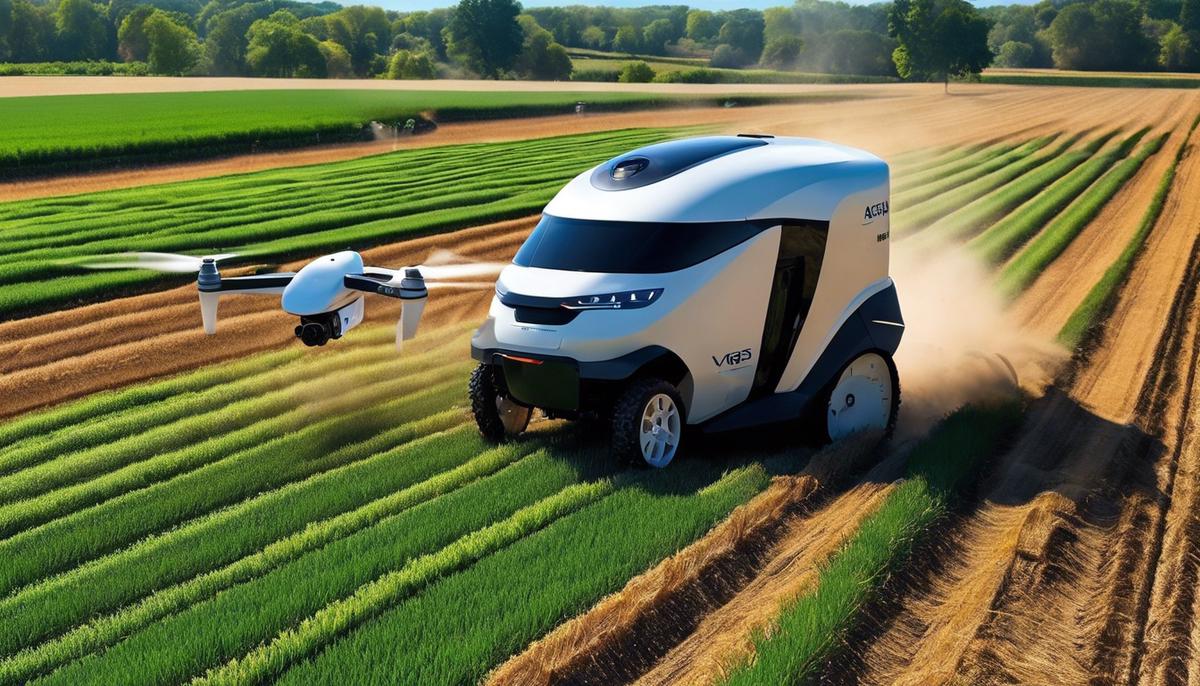
Future Prospects and Challenges of Precision Farming Technology
